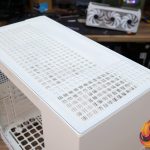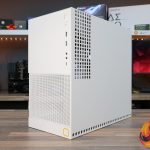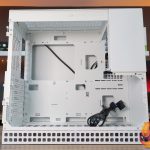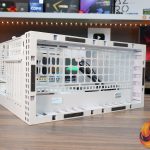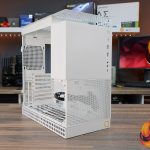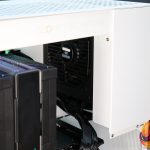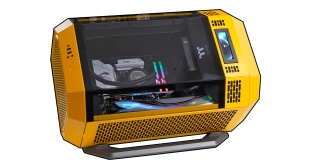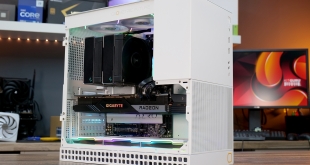
EATX motherboards and installation of graphics cards up to 405mm long inside a 35-litre chassis sounds like compromises have to be made, but that’s what we are looking at in this review. A compact ATX chassis with support for up to EATX motherboards, graphics cards up to 405mm long and multiple radiators including 360mm. So just how did Geometric Future manage to fit all this into the 35-litre capacity Model 4 chassis? Let's find out.
Timestamps:
00:00 Start
00:50 Pricing, colours and details
03:19 Taking the panels off, closer look
04:53 Inside – fan and radiator support
05:32 Installation modes – lifting modes
07:34 PSU install modes
08:15 Motherboard, RAD and GPU support
08:39 Lifted mode thoughts
08:57 Rear / right of case / drive support
09:58 Floor of case and Accessories
11:12 Build details
13:24 Finished build – thermal tests
15:08 James thoughts
Model 4 King Arthur Features:
- EATX motherboard compatibility but in an MATX form factor with just 35L capacity means the Model 4 is compact and space-saving.
- Four installation modes with horizontal or vertical GPU, including a liftable option for additional radiator space.
- Supports simultaneous 360mm in the floor and 240mm radiator installation in the roof in the lifted mode.
- The chassis frame is manufactured from 1.0mm steel plate, 1.2mm steel plate L-shaped side panel and 3.0mm tempered glass.
Specifications:
- Case Type: Mid-tower
- Dimensions: 395-430mm x 215mm x 410mm
- Material: Steel / Tempered glass
- Motherboard Support: EATX, ATX, MATX, ITX
- Expansion Slots: 7 + 2 x vertical
- Storage Bays: Max 2 x 3.52 / 3 x 2.52
- Max GPU Size: 405mm with horizontal PSU (310mm with 180mm> vertical PSU)
- Max CPU Cooler Height: 164mm
- Max PSU Size: 150mm (horizontal) 180mm (Vertical)
- Fan Support: (Top) 2 x 120 /140mm (Bottom) 3 x 120mm/2 x 140mm (Rear) 1 x 120mm
- Pre-installed fans: N/A
- Radiator Support: (Top) 240mm (Bottom) 360/240mm (Rear) 120mm
- Dust Filters: bottom
- Font I/O: 2 x USB 3.0 Type-A, 1 x USB 3.1 Gen 2 Type-C, 2 x 3.5mm audio, Power and reset
Thermal Performance Testing
To simulate thermal demand we run the Cinebench R23 multi-thread benchmark and 3DMark Speed Way stress test simultaneously in a loop for 30 minutes to fully load the system. This gives the CPU and GPU enough time to reach constant steady-state temperature. With this data, we can compare how the system handles the thermal demand and measure peak noise levels.
Thermal performance is measured with the case in various configurations, such as the default, with the tempered glass left-hand side panel removed and with the front panel removed to see how these configurations affect the CPU and GPU temperature. During testing, only stock case fans are used unless otherwise specified. All water pumps are set to maximum RPM and fans are set to a custom RPM curve by the Motherboard software/BIOS.
All temperature measurements are presented as Deltas – meaning the ambient temperature has been deducted from the CPU temperature giving us a Delta. Data shown in the charts represent the average component temperature over the length of the test as measured by HWiNFO and then the last 15 minutes of the data are calculated to get the average. The ambient temperature during thermal tests is between 20-22⁰C.
Test System Specification:
- CPU – Intel Core i7-14700K
- Motherboard – Gigabyte Z790 Aero G
- Graphics Card – Gigabyte RX 7900XT Gaming OC
- Memory – 64GB (2 x 32GB Modules) G.SKILL Trident Z5 RGB DDR5-6400
- Storage – 1 TB Corsair MP700 PCIE Gen5 NVME M.2 SSD
- CPU Cooler – DeepCool AK620
- Power Supply – FSP Hydro PTM X PRO 1200W 80+ Platinum Full Modular
- Case fans – Lian Li UNIFAN TL120 White forwards/reverse blade
- Chassis – Geometric Future Model 4 King Arthur
- Operating System – Windows 11
Thermal Performance Overview
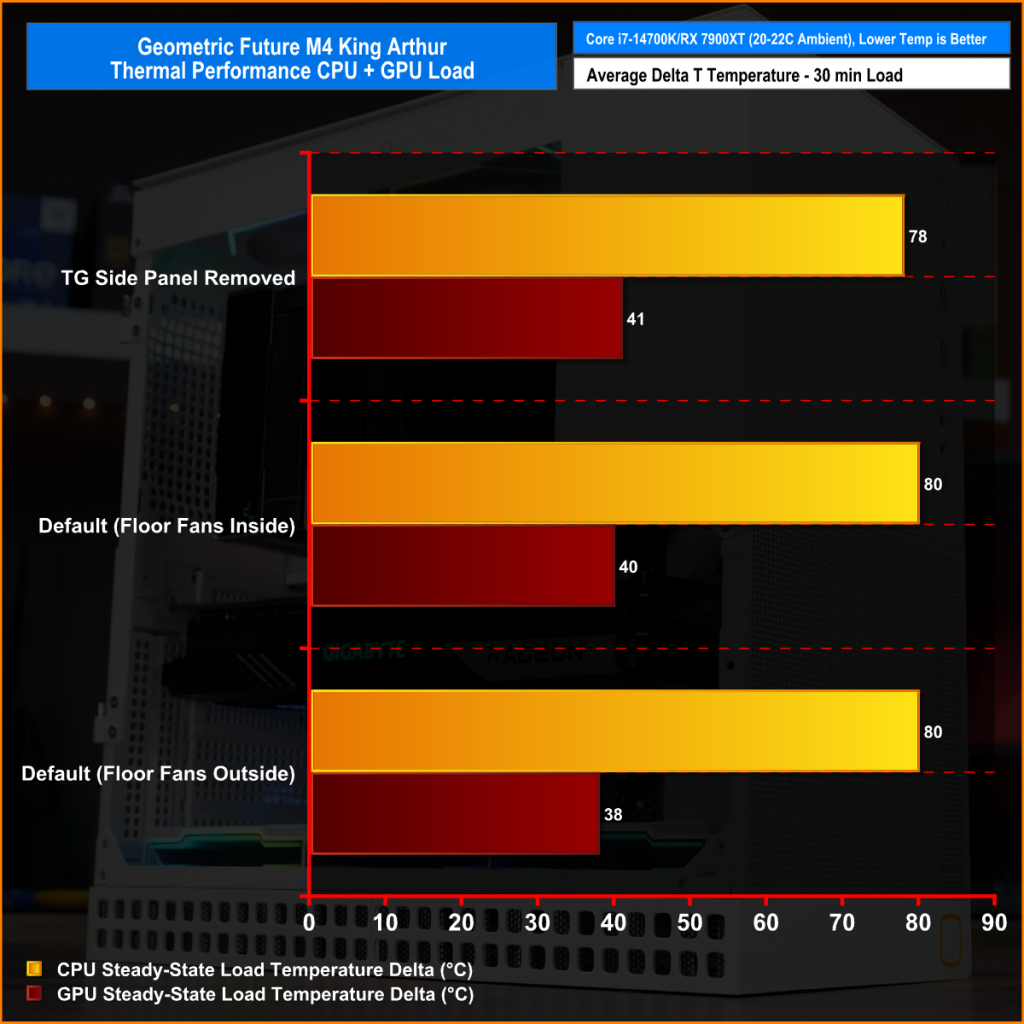
Thermal performance of both the CPU and GPU with the case in its default configuration is decent. The average CPU temperature is high, but it’s what we would expect from this CPU and cooler combination. The floor-mounted fans certainly help with keeping the GPU temperature at a steady 40°C average while allowing the GPU frequency to boost to around 2300Mhz. Removing the tempered glass had little effect on the CPU or GPU temperature, moving the floor fans to the outside of the case dropped GPU temperature by a degree or two due to higher GPU fan speed.
Noise Output
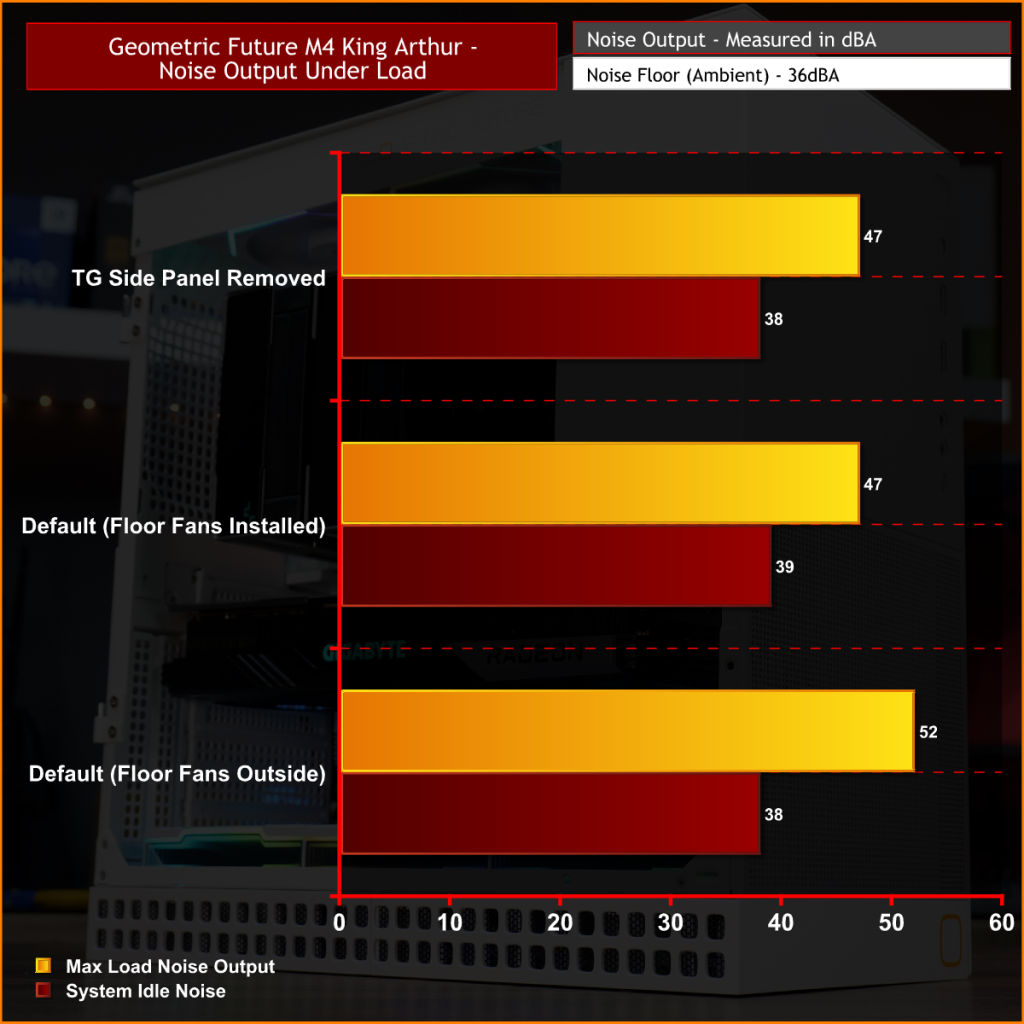
The reason that GPU temperature was lower with the fans in the floor recess was because the GPU temperature spiked initially so the GPU fans ramped up to 3300RPM and stayed there, while in the other two configurations GPU fan speed was around 1900RPM which meant that with the floor fans mounted inside the case, noise output of the system is considerably less than with the floor fans on the outside in the recess.
Closing Thoughts
If a compact ATX case with EATX motherboard support is what you are looking for, you could do a lot worse than choosing the Geometric Future Model 4. It’s a good-looking case in standard mode, it will comfortably fit an EATX motherboard, a big graphics card and with its compact 35-litre capacity it's small enough to fit in most desk spaces. As long as you are not interested in liquid cooling then this case ticks a lot of boxes. However, there is space for a 360mm radiator in the floor so if you are happy with running an AIO like that then the Model 4 could be perfect for you.
Geometric Future makes a big deal about the liftable option of the Model 4, a feature that allows you to raise to roof panel of the case to create additional space for a 240mm radiator or AIO installation at the top of the case. It’s a good idea but the implementation is poor. The case looks odd in the lifted mode with the huge panel gap at the front where you can see into the PSU area, it just doesn’t look finished off, as if it was an afterthought and Geometric Future didn’t know what to do with the gap that’s left by lifting the roof.
I had a few niggles with the case during system installation too, in the standard mode which looks the best the power supply needs to be installed horizontally, which limits the PSU length to 150mm. This means that a lot of ATX power supplies won't fit. An attempt to use a Seasonic SGX-750 SFX power supply failed as the cables were not long enough to reach the EPS connectors on the motherboard. However, we found that an FPS Hydro PTM X PRO is a good fit, it's approximately 130mm long which is a tight squeeze with modular cables, the 150mm max size listed by Geometric Future seems optimistic.
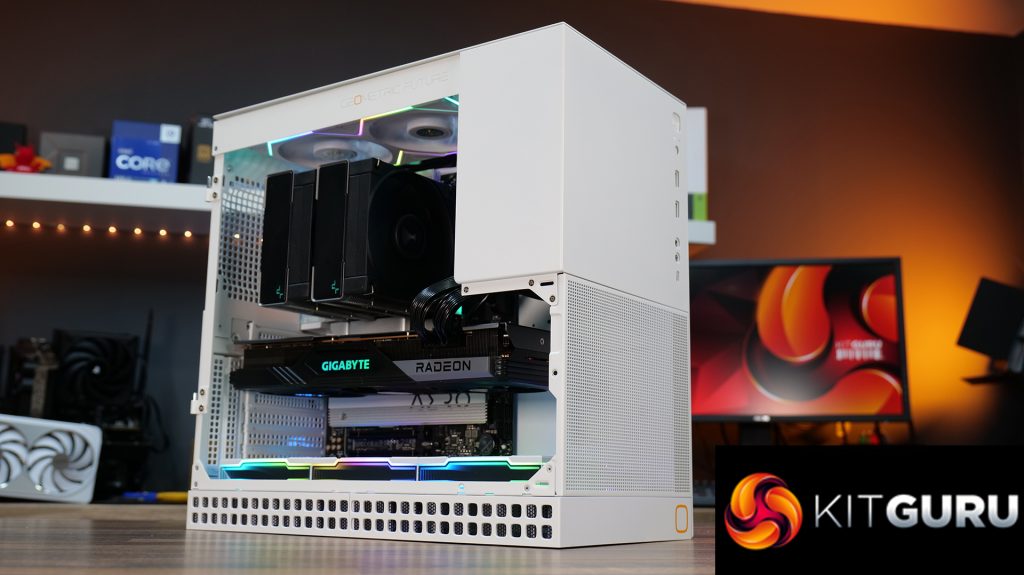
There were other minor issues with the case such as the hinge screws for the TG side panel interfering with 120m fan installation at the rear, build quality is questionable in places and the official 164mm maximum CPU cooler size is also very optimistic. We tried installing a Deepcool Assassin IV which is 163mm tall and that would not fit so we had to settle for a smaller 160mm tall CPU cooler which we think is the maximum comfortable CPU cooler size for this case.
But other than those minor issues, we quite like this case. It’s a good-looking case in standard mode, it's available in a couple of colour options, thermal performance is decent and the compact size means it should fit in tight desk spaces. There aren’t a lot of good compact cases that will support EATX motherboards so this might be worth considering if you are in the market for this type of case.
The Geometric Future Model 4 King Arthur is available to purchase now at Amazon UK priced from £86.48 HERE.
Pros:
- Looks great in standard mode.
- Lots of cable management space.
- A compact design should fit in most spaces.
- Decent thermal performance.
Cons:
- Looks odd in the lifted mode with the big gap at the front.
- The build quality isn’t perfect.
- Some 120mm fans won't fit in the rear mount.
- No pre-set routes for cables make cable management difficult.
- With the power supply installed horizontally, It is difficult to connect cables without some panel disassembly.
- 160mm max CPU cooler height is more realistic.
KitGuru says: If you need a compact case that supports EATX motherboards and big graphics cards with decent thermal performance then you might find the Geometric Future Model 4 King Arthur is right up your street.
Be sure to check out our sponsors store EKWB here
 KitGuru KitGuru.net – Tech News | Hardware News | Hardware Reviews | IOS | Mobile | Gaming | Graphics Cards
KitGuru KitGuru.net – Tech News | Hardware News | Hardware Reviews | IOS | Mobile | Gaming | Graphics Cards



